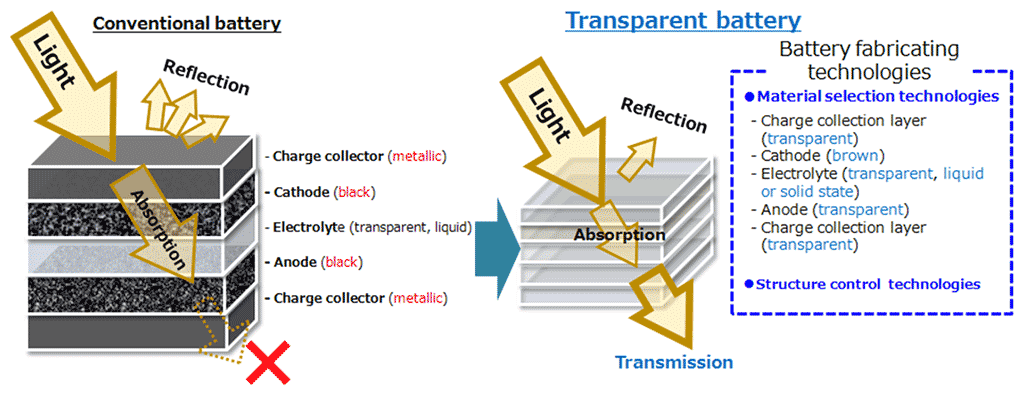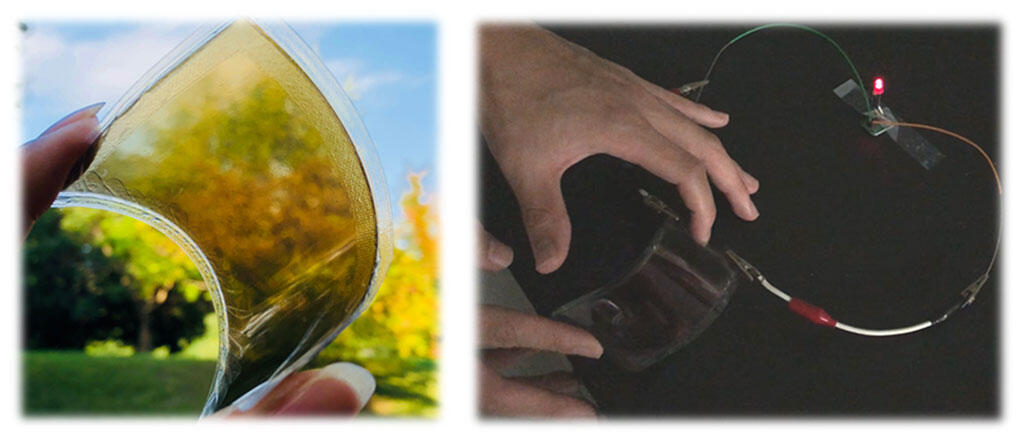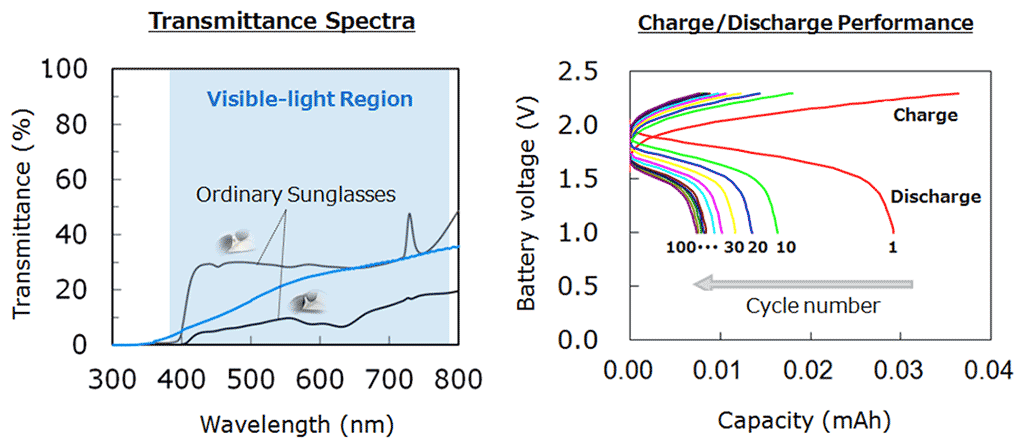Microsoft ends support for Internet Explorer on June 16, 2022.
We recommend using one of the browsers listed below.
- Microsoft Edge(Latest version)
- Mozilla Firefox(Latest version)
- Google Chrome(Latest version)
- Apple Safari(Latest version)
Please contact your browser provider for download and installation instructions.
November 26, 2018
Nippon Telegraph and Telephone Corporation
Confirmation of the basic operation of 'transparent battery' that adapts to the surroundings ~Toward further expansion of IoT potential~
Nippon Telegraph and Telephone Corporation (NTT, Head office: Chiyoda-ku Tokyo; President & CEO: Jun Sawada) fabricated a 'transparent battery' that adapts to the surroundings without being aware of its existence, and confirmed its operation. We developed 'transparent battery' by utilizing our knowledge and technology in the battery field. In the future, we will continue improving its performance and explore areas where 'transparent battery' can be applied in order to further expand the potential of IoT.
The results will be presented at NTT R&D Forum2018 Autumn to be held on November 29 and 30, 2018.
1.Research background
IoT, in which everything is turned into a device and connected to a network, is spreading. In the future, IoT will become more widespread, while at the same time making it more convenient, there will be a lot of devices around it, and it may become bothersome as the presence cannot be ignored. Therefore, generally, in order to reduce their presence, wearable devices have focused on being such as lightweight and small.
We focused on "transparent" as a new perspective in addition to lightweight and small. In order to explore the possibility of devices that do not give a sense of presence, we have applied our knowledge and technologies we have developed in the battery field, and have been conducting research and development on batteries that transmit light.
2.Research results
Research and development of batteries has generally focused on applications in EVs, smartphones, drones, etc. So, the batteries have been designed for larger capacity, longer life, and higher safety. For this reason, electrodes of conventional batteries have been formed combining layers of active-materials, conductors, and binders on a metallic charge-collecting layer. Therefore, the electrodes of conventional batteries are generally black in color and do not transmit light.
As shown in Figure 1, we focused on the materials and structure that consist the battery from the viewpoint of light transmission, and developed technology to suppress the absorption and reflection of incident light, aiming at a device that adapts to the surroundings.
| - Materials selection technology | Select battery electrode materials that reduce light absorption. |
|---|---|
| - Structure control technology | Fabricate battery electrodes with structures that can minimize absorption and reflection of light. Also realize transparent flexible batteries for wearables, by forming electrodes on conductive film and using gel electrolytes. |
 Figure 1. Structure of conventional and proposed batteries.
Figure 1. Structure of conventional and proposed batteries.
We fabricated a rectangular transparent and flexible battery that is 90 × 50 mm (Figure 2, left). To test its operation, we connected it to a commercially available LED and confirmed that it was able to operate for 5 minutes (Figure 2 right).
 Figure 2. Transparent and flexible battery and LED lighting
Figure 2. Transparent and flexible battery and LED lighting
To further evaluate the performance of the battery, we measured the transmittance characteristics using a spectrophotometer, which indicated an average transmittance of about 25% (Figure 3, left). This is comparable to the transmittance of ordinary sunglasses. We also evaluated the charging and discharging performance of the battery, confirming an average voltage of 1.7 V and a capacity of 0.03 mAh at a current density of 0.01 mA/cm2. A battery size of approximately 4.5 m2 would have capacity equivalent to a CR1025 coin battery. In addition, the battery is shown to be rechargeable (Figure 3, right). LED can be turned on even after 100 cycles of charging and discharging.
 Figure 3. Transmittance spectra and charge/discharge performance of the battery.
Figure 3. Transmittance spectra and charge/discharge performance of the battery.
3.Future prospects
Transparent battery has the potential to be widely applicable in areas where conventional batteries were difficult to apply. We believe that combining this battery with the field of transparent device which is currently being researched and developed (information display device, photovoltaic power generation devices in the building materials field, etc.) will lead to new possibilities for IoT. In the future we plan to improve both the transparency and the battery performance, and search for specific application areas.
- *The results will be presented at NTT R&D Forum2018 Autumn to be held on November 29 and 30, 2018.
NTT R&D Forum2018 Autumn official site: https://labevent.ecl.ntt.co.jp/forum2018a/e/index.html
Contact
Nippon Telegraph and Telephone Corporation
Science and Core Technology Laboratory Group
science_coretech-pr-ml@hco.ntt.co.jp
Information is current as of the date of issue of the individual press release.
Please be advised that information may be outdated after that point.
NTT STORY
WEB media that thinks about the future with NTT











